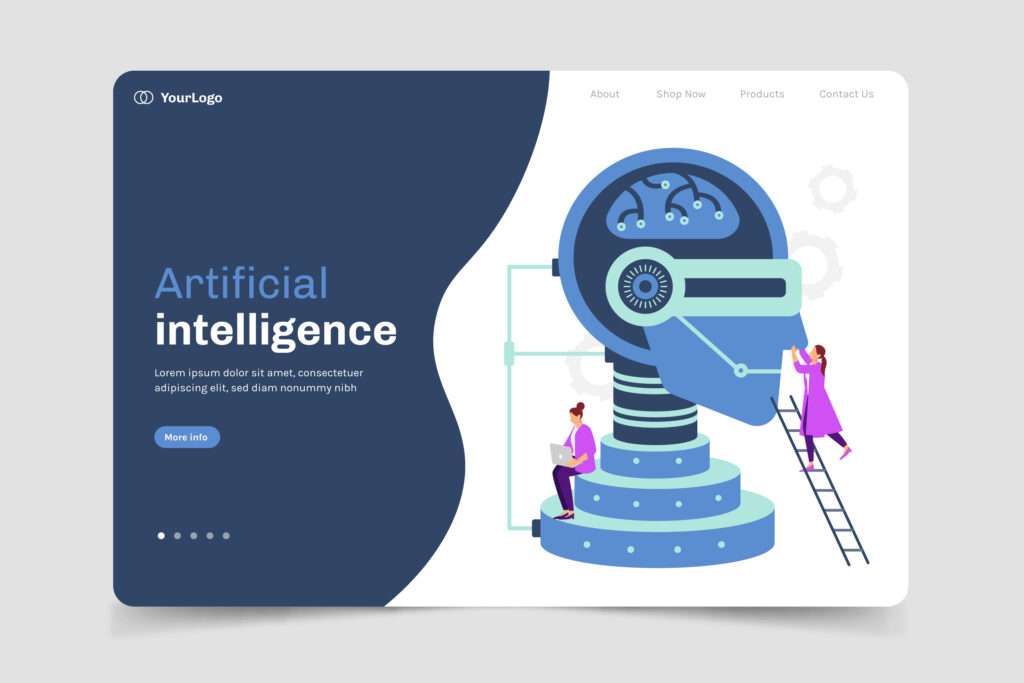Introduction:

Artificial intelligence (AI) and machine learning (ML) are two closely related fields that have garnered significant attention in recent years. Both AI and ML involve the use of computers to perform tasks that would normally require human intelligence, such as decision making, problem solving, and pattern recognition. While AI has been around for decades, recent advances in computing power and data availability have led to significant progress in the field of machine learning, which has in turn fueled the development of new AI applications.
What is Artificial Intelligence?
Artificial intelligence (AI) refers to the development of computer systems that are able to perform tasks that would normally require human intelligence. This includes tasks such as decision making, problem solving, and pattern recognition. The goal of AI is to create systems that are able to “think” and “act” like humans, although the term “artificial intelligence” can also be used to describe more general systems that perform tasks without human intervention.
AI can be divided into two main categories: narrow or general. Narrow AI is designed to perform a specific task, such as playing chess or recognizing faces in a photograph. General AI, on the other hand, is designed to be able to perform a wide range of tasks, similar to the way a human can.
What is Machine Learning?
Machine learning (ML) is a subset of AI that involves the use of algorithms to enable computers to learn from data without being explicitly programmed. These algorithms can be trained on large datasets to recognize patterns and make predictions or decisions based on that data.
There are several different types of machine learning algorithms, including supervised learning, unsupervised learning, semi-supervised learning, and reinforcement learning.
Supervised learning involves training a machine learning model on labeled data, where the correct output is known. This is done by providing the model with a set of input-output pairs and allowing it to learn the relationship between the two. Once the model has been trained, it can be used to make predictions on new, unlabeled data.
Unsupervised learning involves training a machine learning model on unlabeled data. This is done by providing the model with a set of input data and allowing it to discover patterns and relationships within the data. Unsupervised learning is often used for tasks such as clustering, where the goal is to group similar data points together.
Semi-supervised learning is a hybrid of supervised and unsupervised learning, where the model is trained on a combination of labeled and unlabeled data. This can be useful when there is a large amount of unlabeled data available, but it is too expensive or time-consuming to label it all.
Reinforcement learning involves training a machine learning model through trial and error, by providing it with rewards or punishments for certain actions. This type of learning is often used in tasks where an optimal solution needs to be found, such as playing a game or optimizing a production process.
Applications of Artificial Intelligence and Machine Learning:
Artificial intelligence and machine learning have a wide range of applications across various industries, including healthcare, finance, transportation, and manufacturing. Some examples of how AI and ML are being used include:
Healthcare: AI and ML are being used to develop systems that can assist with diagnosing diseases, predicting patient outcomes, and identifying potential drug candidates.
Finance: AI and ML are being used to analyze financial data and make investment decisions, as well as to detect fraudulent activity.
Transportation: AI and ML are being used to develop self-driving cars and optimize transportation routes and schedules.
Manufacturing: AI and ML are being used to improve efficiency in manufacturing processes and identify potential





2 thoughts on “Artificial Intelligence (AI) and Machine Learning (ML)”